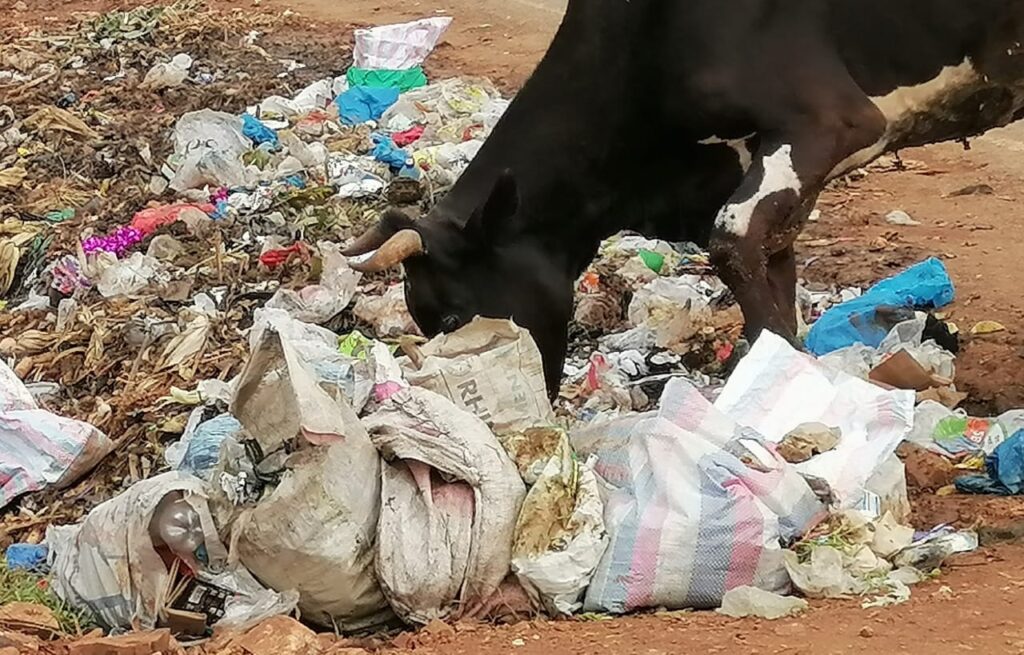Residents and traders across Kisii County towns say they are running risk of contracting diseases following piling garbage near their premises and markets.
At Mwembe, in Kisii town they said the mounds of garbage along the access roads have remained uncollected for more than a week attracting flies and rodents.
In some swelling heaps, cows and goats from the neighborhood villages leisurely munch the food remains dumped there.
Gesare Osero, a shopkeeper, she keeps the door to her house closed all the time to keep flies away.
“I had bought sprays but there are are expensive, they are already eating into whatever little i am getting from this kiosk,” she told Kahawa Tungu.
John Kerosi, a businessman, said his young children had been wandering into the dumps.
“My son was coughing uncontrollably yesterday night and i suspect the garbage has something to do with this,” he said.
Most affected are traders at Menyinkwa, Mwembe, Milimani and Jogoo.
Down town, traders at the grocery market lamented constant delays in collecting garbage from the bins.
“There was a time this town was clean, not anymore. We can’t precisely explain what is going on at the moment,” said Jane Gesare, a fruit vendor.
She said even the number of buyers purchasing from them has shrunk considerably.
“Some now prefer going to the supermarket than coming here, we are registering loses.,with no other place to go we will continue to suffer,” she narrated.
In Keumbu, Nyaribari Chache, the market sweepers had been on strike for two years over salary arrears.
The traders voiced concern over delays by the municipal staff from collecting the garbage.
“We have raised this issue severally but the responses is tardy,” he said.
He had vowed to bring sanity during the period to the polls, it is sad we are not seeing the results.
“Severally he said he was to do with until angels in heaven get happy. Today only garbage greets us from each street. Governor kindly do something,” stated the trader.
At Magena, the traders said they may hold protests if the situation persists.
“Governor Arati, during the campaigns had promised to work like a donkey to improve services but that is not what we are seeing now,” said Rose Kemuma.
At Masimba, the town dwellers are disposing waste at a riverbank with some refuse washing down the streams,” said George Thomas.
Email your news TIPS to Editor@kahawatungu.com or WhatsApp +254707482874
